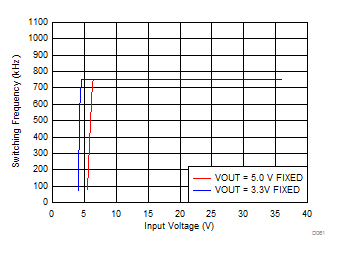SNVSAQ4C December 2017 – March 2023 LMZM23601
PRODUCTION DATA
- 1 Features
- 2 Applications
- 3 Description
- 4 Revision History
- 5 Pin Configuration and Functions
- 6 Specifications
- 7 Detailed Description
- 8 Application and Implementation
- 9 Device and Documentation Support
- 10Mechanical, Packaging, and Orderable Information
Package Options
Refer to the PDF data sheet for device specific package drawings
Mechanical Data (Package|Pins)
- SIL|10
Thermal pad, mechanical data (Package|Pins)
Orderable Information
6.7 Typical Characteristics
VIN = 24 V, TA = 25°C (unless otherwise noted). Refer to default evaluation board layout and bill of materials.
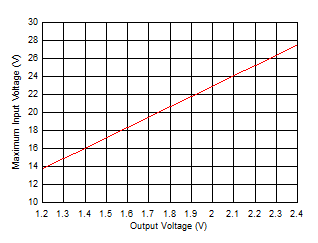 Figure 6-1 Maximum Input Voltage for VOUT < 2.5V
Figure 6-1 Maximum Input Voltage for VOUT < 2.5V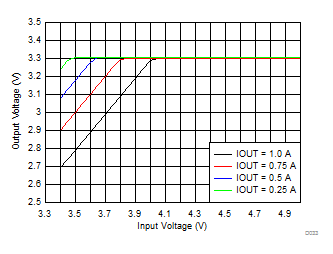
| VOUT = 3.3 V | ||
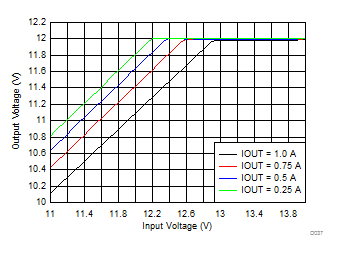
| VOUT = 12 V |
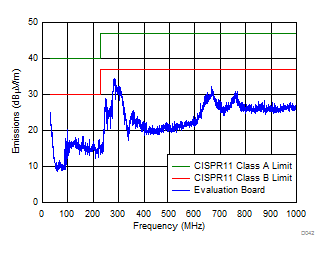
| VIN = 24 V | OUT = 5 V | IOUT = 1 A | |
| Default EVM Layout with added 3 × 100pF 0603 CIN | |||
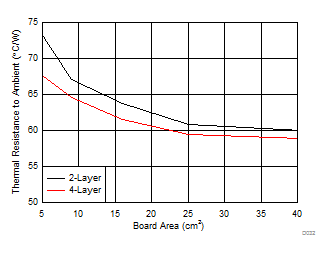
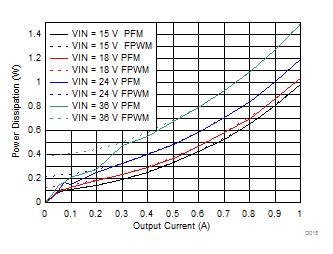
| VOUT = 12 V |
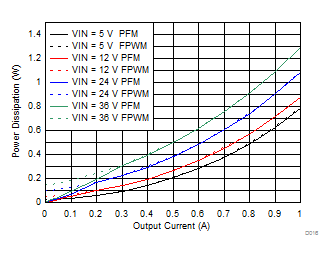
| VOUT = 3.3 V |
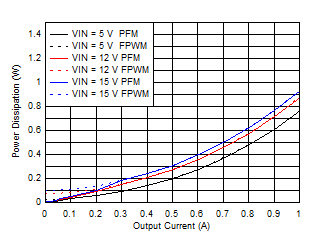
| VOUT = 1.8 V |
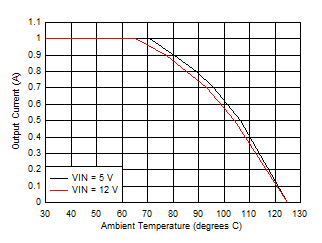
| VOUT = 1.2 V | Rθ = 58°C/W |
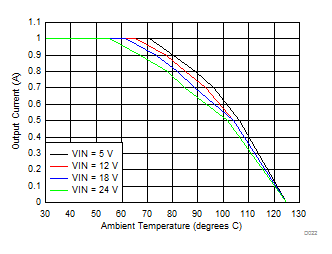
| VOUT = 2.5 V | Rθ = 58°C/W |
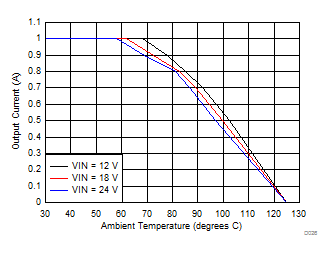
| VOUT = 5 V | Rθ = 58°C/W |
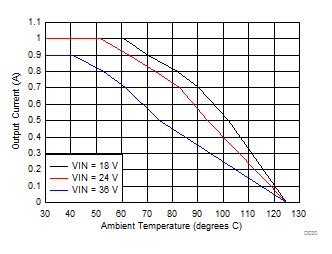
| VOUT = 15 V | Rθ = 58°C/W |
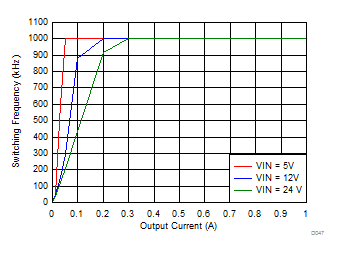
| VOUT = 3.3 V Adjustable Option |
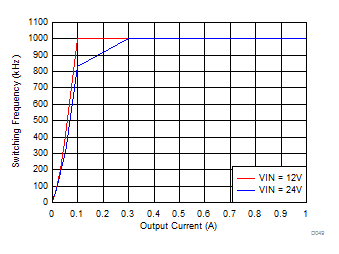
| VOUT = 5 V Adjustable Option |
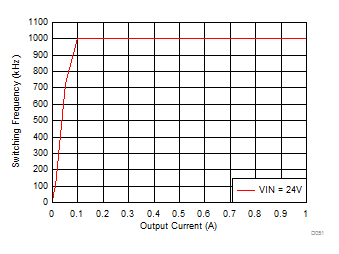
| VOUT = 12 V |
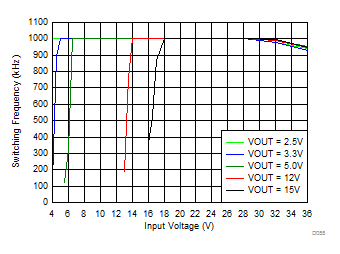
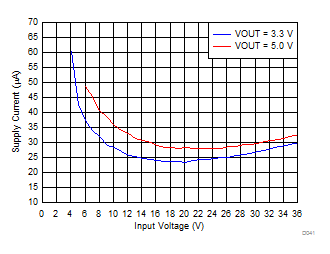
| Fixed output voltage options | EN = VIN | |
| Output voltage in regulation | Load = Open | |
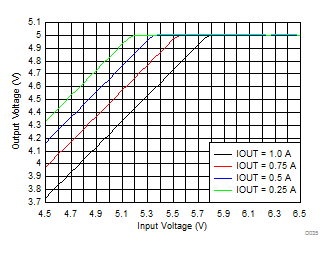
| VOUT = 5 V |
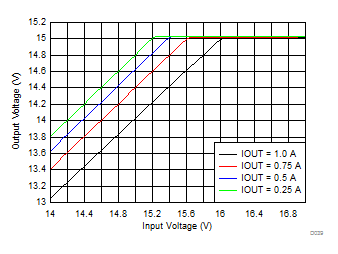
| VOUT = 15 V | ||
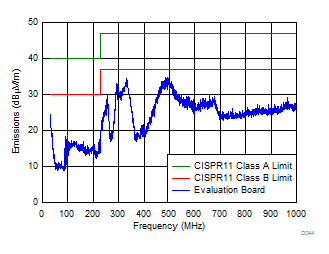
| VIN = 24 V | IOUT = 1 A | VOUT = 5 V | |
| Default EVM BOM with GND Plane as Top Layer | |||
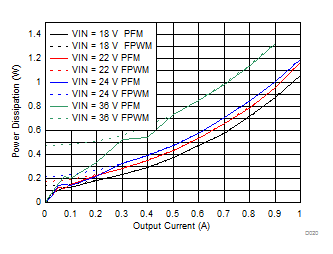
| VOUT = 15 V |
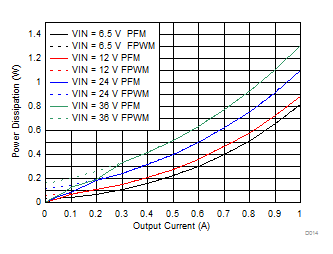
| VOUT = 5 V |
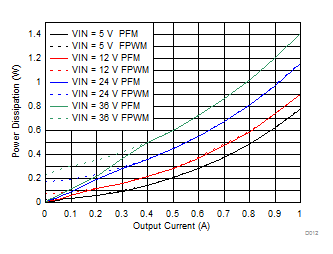
| VOUT = 2.5 V |
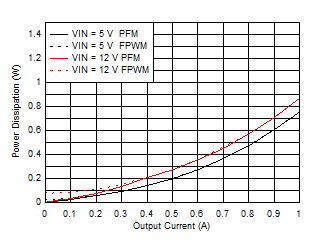
| VOUT = 1.2 V |
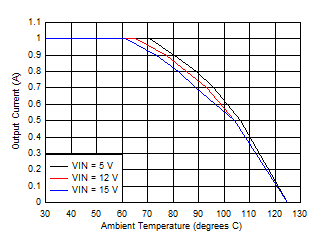
| VOUT = 1.8V | Rθ = 58°C/W |
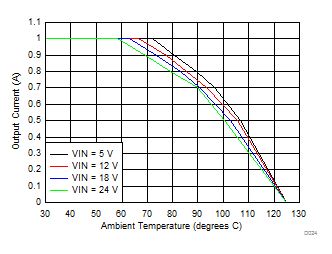
| VOUT = 3.3 V | Rθ = 58°C/W |
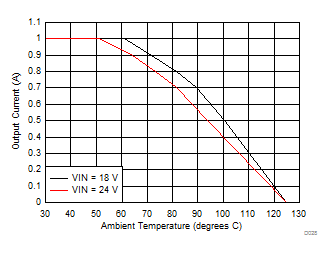
| VOUT = 12 V | Rθ = 58°C/W |
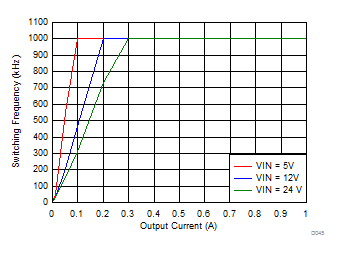
| VOUT = 2.5 V |
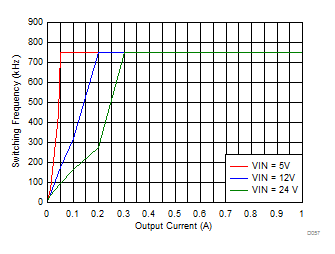
| VOUT = 3.3 V Fixed Option |
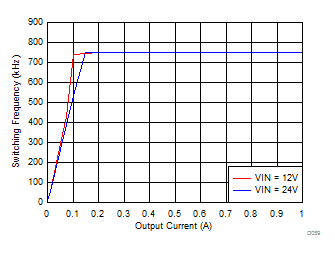
| VOUT = 5 V Fixed Option |
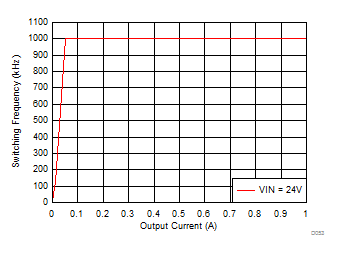
| VOUT = 15 V |
